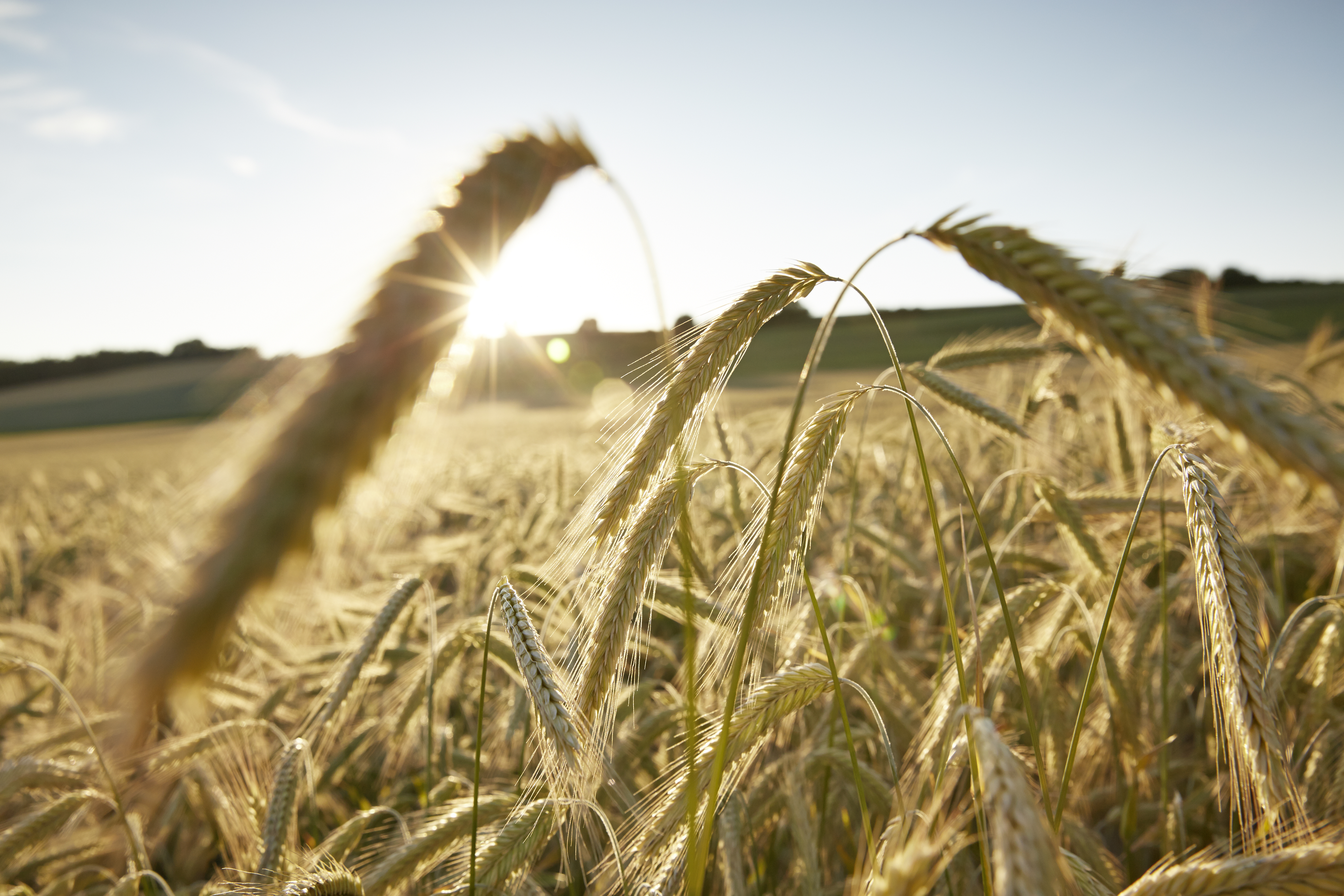Helpful tips and advice for fertilisation of sugarbeets
In order to avoid yield and quality losses in sugarbeet cultivation, you should bear in mind that beets have a high demand for primary and trace nutrients within the crop rotation, which is why it is advisable to apply a basic fertiliser before growing beets. Soil fertilisation with potassium, phosphor and magnesium is frequently performed even during the sugarbeet cultivation year.
Targeted nutrient requirement values in kg/ha for beets according to LUFA [German Agriculture Analytic and Research Institute] Rostock, Fertilisation Guidelines 2004; Content Class C
| Yield expectations | Total nutrient demand values (kg/ha) | ||
|---|---|---|---|
| t beets/ha | P205 | K20 | MgO |
| 60 | 110-120 | 450-470 | 90-100 |
| 70 | 130-140 | 520-550 | 100-120 |
| 80 | 150-160 | 600-650 | 120-130 |
Nutrient conversion
| Element | Conversion | Oxide | Conversion | Element |
|---|---|---|---|---|
| P | x 2.29 | P20 | x 0.44 | P |
| K | x 1.21 | K20 | x 0.83 | K |
| mg | x 1.66 | MgO | x 0.60 | mg |
| Ca | x 1.40 | CaO | x 0.71 | Ca |
Nitrogen has the greatest effect on yield and quality. N-containing compounds such as soluble proteins, amino acids, amides, ammonium salts, betaine and nitrate are essential for the mass growth and development of the beet.
How you can determine the nitrogen requirement of your acreage:
1. EUF method:
Soil samples are collected in the late summer of the previous year, after harvesting the previous crop.
2. Nmin determination:
Soil samples are collected just before sowing, in February/March. Since nitrogen has the greatest effect on the yield, the demand should be determined relatively close to the sowing time.
Determination of demand by the Nmin method:
N-target value (160 kg N/ha) – Nmin content determined = kg N/ha to be added as fertiliser The N-target value includes the average N-addition amount during the growing period.
What you should keep in mind regarding nitrogen addition on your acreage:
- Nitrogen can be applied both before sowing and after sowing
- If possible, do not exceed 100 kg N/ha per addition, since salinisation can occur in the germination horizon in the case of a large amount of nitrogen
- With good further addition of nitrogen, mineral fertilisation can be reduced, since beets are very nitrogen-efficient plants
Effect of N-fertilisation on yield and quality of sugarbeets
| Fertilisation (kg N/ha) | Root yield (dt/ha) | Sugar content (%) | Amino-N (mmol/1000 g beets) | BZE (dt/ha) |
| 0 | 567 | 18.0 | 13.3 | 90.8 |
| 40 | 599 | 18.0 | 15.0 | 95.3 |
| 80 | 612 | 17.8 | 17.0 | 96.4 |
| 120 | 625 | 17.7 | 19.6 | 97.0 |
| 160 | 628 | 17.4 | 22.4 | 95.5 |
| 200 | 628 | 17.2 | 24.8 | 93.8 |
- an essential nutrient for sugarbeet, activates enzymes and
- thus regulates water balance and increases transport of assimilate
- 80% of potassium absorbed is located in the leaf, 20% in the body of the root
- on light soils: K fertilisation in springtime
- Caution: there is a risk of increasing the salt content in the germination horizon such that germination delays or even total losses will occur
- Perform soil testing to conduct appropriate potassium fertilisation
- Important for metabolism and energy content of the beet
- Especially important in the early stages for rapid development of root growth
- Availability is promoted by adequate lime and humus supply
- Magnesium, as the central component of chlorophyll, is important for photosynthesis and enzyme reactions
- In a sugarbeet-cereal grain crop rotation, the extraction is usually not compensated by conventional fertilisation
- Addition using multi-nutrient fertilisers, e.g. Carbokalk, is possible
- Spraying with Epsom salt can reduce short-term and weather-related deficiencies after sowing
- Sugarbeet is demanding in terms of the calcium level of the soil
- Significant in regulation of root growth and in enzyme reactions
- Good lime supply promotes the availability of all nutrients
- Within the crop rotation pattern, calcium fertilisation of sugarbeets should be conducted
- Carbokalk from the sugar refinery is an available calcium fertiliser
Sugarbeet has a high micronutrient demand. Boron and manganese are especially important. High pH-values and drought can limit the availability of nutrients despite adequate levels in soil.
Boron
- Sugarbeet is one of the boron-requiring crops
- Boron deficiency leads to heart rot and dry rot
- at locations with limited availability, leaf fertilisation at the time of row closure is recommended
Manganese
- Manganese is usually present in soil in adequate amounts
- Leaf fertilisation may prevent deficiency symptoms
Organic fertiliser can be utilised well by sugarbeets. In addition to liquid slurry and barn slurry, fermentation residues in particular are finding increased use as organic fertilisers. The basic nutrients (K, P and Mg) can be credited at 100%.
What you should know about organic fertilisation:
- The N allowance cannot be predicted exactly, since different factors will affect the results (application conditions, weather)
- Spring application increases the N utilisation
- For acreages that have received organic fertilisation for years, attention should be paid to continuous N replenishment
- Determination of the nutrient content of farm fertilisers is advisable
- 60-80% of the total nitrogen can be included in the calculation
- The provisions of the Fertilisation Ordinance must be followed when organic fertilisers are used
| Farm fertilisers | DM | Total N | NH4-N | P2O5 | K2O | MgO | CaO |
| (%) | in kg/t or m³ | ||||||
| Litter manure (composted) per t | |||||||
| Cow manure | 25 | 5 | 0.4 | 3 | 7 | 1.5 | 3.5 |
| Pig manure | 23 | 6 | 0.5 | 4 | 3 | 2 | 4 |
| Sheep manure | 25 | 8 | 0.6 | 3 | 7 | 2 | 3.5 |
| Horse manure | 25 | 6.5 | 0.5 | 3 | 6 | 1 | 3 |
| Chicken manure | 45 | 28 | 7.8 | 24 | 23 | 6 | 22 |
| Turkey manure | 45 | 18 | 5 | 20 | 16 | 5 | 18 |
| Poultry manure per t | |||||||
| Fresh chicken manure | 23 | 13 | 6 | 8 | 7 | 2 | 21 |
| Dry chicken manure | 45 | 24 | 10 | 17 | 14 | 5 | 42 |
| Liquid manure per m³ | |||||||
| Liquid cow manure | 2 | 3 | 2.7 | 0 | 8 | 0 | 0 |
| Liquid pig manure | 2 | 4 | 3.6 | 1 | 3 | 0 | 0 |
| Semi-liquid slurry per m³ | |||||||
| Semi-liquid cow slurry, thin | 5 | 2.9 | 1.7 | 1.2 | 3.1 | 0.6 | 1.2 |
| Semi-liquid cow slurry, normal | 7 | 3.5 | 2.0 | 1.5 | 3.9 | 0.8 | 1.6 |
| Semi-liquid cow slurry, thick | 9 | 4.2 | 2.3 | 1.8 | 4.6 | 1.0 | 2.0 |
| Semi-liquid pig slurry, thin | 1.5 | 2.5 | 2.1 | 0.8 | 1.8 | 0.3 | 0.8 |
| Semi-liquid pig slurry, normal | 3 | 3.6 | 2.8 | 1.7 | 2.4 | 0.6 | 1.5 |
| Semi-liquid pig slurry, thick | 4.5 | 4.4 | 3.3 | 2.5 | 3.0 | 0.9 | 2.3 |
| Semi-liquid chicken slurry | 14 | 9.2 | 6.5 | 7.0 | 5.0 | 1.8 | 15 |
| Biogas substrate | |||||||
| BSR with 4-6% DM | 5.2 | 4.0 | 3.2 | 1.5 | 4.1 | 0.6 | |
| BSR with 6-8% DM | 7.2 | 5.1 | 2.9 | 2.1 | 5.4 | 0.8 | |



